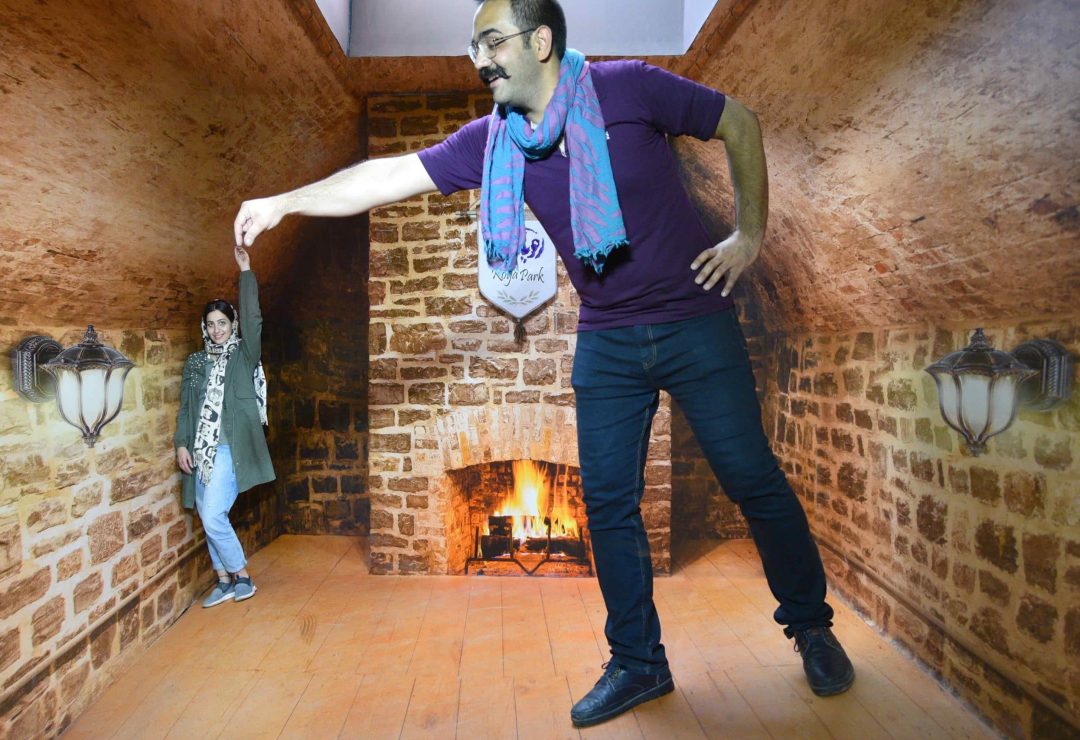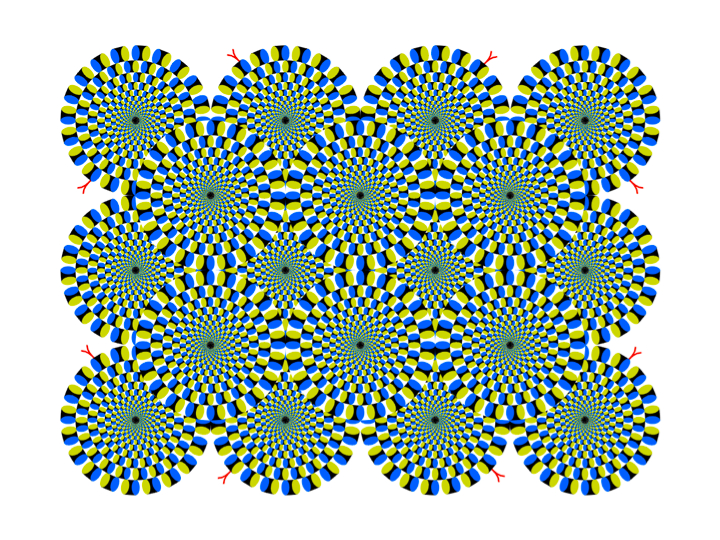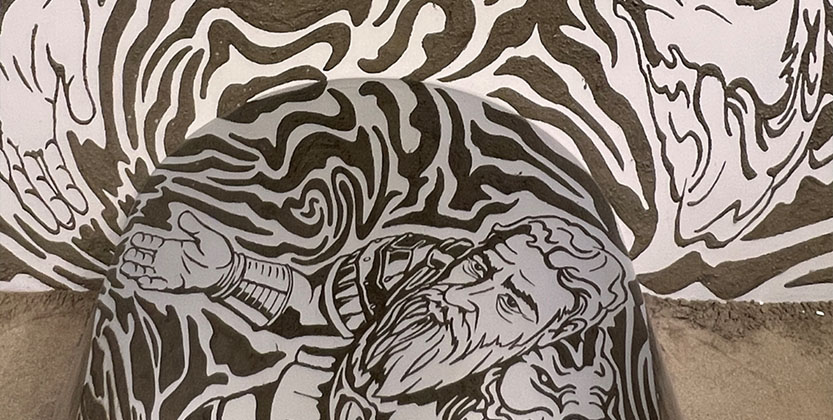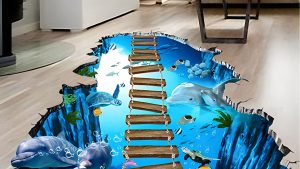optical illusion work are intriguing phenomena that occur when there is a discrepancy between what our eyes perceive and how our brain interprets visual information. Understanding the mechanisms behind these illusions sheds light on the intricate processes of visual perception.

1. Misleading Depth Perception: Exploring illusions that disrupt depth cues
Illusions like the Ponzo illusion and the Ames room challenge our brain’s estimation of depth and size by manipulating perspective, shading, and size cues. In the Ponzo illusion, two identical horizontal lines appear to be different lengths based on their position against converging background lines. This highlights how visual context impacts our perception of an object’s size.
Our brain judges an object’s size based on its background. When an object is placed against lines that converge toward a vanishing point, as with the Ponzo illusion, our brain perceives it as farther away. The more distant it appears, the larger our brain estimates it to be. This automatic compensation for perceived depth leads to misjudging the two identical lines as different lengths. The Ames room uses distorted room proportions to create dramatic misperceptions of size and distance as a person moves through the space. The room is constructed like a trapezoid with one corner far closer to the viewer. This manipulates perspective lines so that a person on one side appears giant while a person on the other side looks tiny.
In reality, people in an Ames room are the same size but as they walk across the room they appear to shrink or grow. The brain’s innate tendency to judge depth and distance is thrown off by the false perspective. These illusions create captivating misperceptions and highlight the complex nature of depth perception. They reveal how the brain estimates an object’s depth and distance by processing different visual clues that can be deceptive. Depth perception depends on calculating relationships between objects, but various shortcuts and assumptions that the brain relies on can be manipulated to produce dramatic illusions.

2. Ambiguous Figures: Unveiling illusions of perceptual ambiguity
Illusions such as the Necker cube and Rubin’s vase play with our brain’s ability to interpret images in multiple ways. The Necker cube’s 12 lines can be perceived as a cube sitting in two different orientations. Our brain switches back and forth between the two cube orientations randomly. Rubin’s vase shows either two faces in profile or a vase, alternating randomly between the two interpretations. These ambiguous images demonstrate how slight changes in visual information can lead to a constantly shifting perception, creating intriguing illusions of ambiguity. They show that an unchanging image can result in very different perceptual interpretations within the brain. The visual system abhors ambiguity and seeks to assign one consistent interpretation to a figure. But some images allow more than one valid perceptual organization, causing the brain to flip back and forth between possible interpretations. Even when the image remains constant, we perceive it differently as our brains imposes varied meaning on the same visual input.

3. Motion Perception: Discovering illusions of static movement
Certain optical illusion work employ patterns, colors, and shapes to create a perception of motion in static images. The motion aftereffect is a classic example, where prolonged exposure to motion can make stationary objects appear to move. If you stare at a moving waterfall for a minute and then look at stationary rocks, the rocks may appear to drift upwards for a short period. This occurs because motion sensing neurons in the brain become desensitized and need time to readjust to static environments. Optical flow patterns use radial gradients to produce sensations of objects spinning, spiraling or expanding. These effects reveal how edges, contrast, shading and placement of shapes can make our brains perceive motion without any real movement. The brain contains specialized motion detection cells that respond to changing patterns of light and dark in the visual field. optical illusion work by mimicking these retinal changes with visual cues that trick the motion cells into firing, creating an illusion of movement from a static image.

4. Perceptual Grouping and Gestalt Principles: Understanding how we organize visual information
Illusions like the Kanizsa triangle reveal how our brain groups visual elements and perceives patterns based on principles such as proximity, similarity, and continuity. In the Kanizsa triangle, pacman shapes oriented in a certain way are perceived as a white triangle even where none exists. This demonstrates our brain’s innate drive to organize fragmented information into meaningful objects. The Gestalt principles of perception explore this tendency further, showing how the mind imposes order on chaotic visual stimuli. The principles state that elements tend to be grouped together if they are similar, proximal, form a continuous pattern, or follow common trajectories. In the Kanizsa triangle, the pacmen fulfill principles of proximity and continuity, tricking the brain into perceiving a whole triangle and ignoring the gaps. Illusions emerging from these principles expose the underlying mechanisms by which we make sense of what we see. Our visual processing system constantly looks for patterns and relationships in order to interpret complex retinal input. Principles of perceptual organization describe automatic heuristics and biases inherent in this process, which can be exploited to produce compelling illusions. Studying these principles provides insight into how our brain constructs order out of visual fragments in our complex visual world.

Exploring the mechanism of optical illusion work
Explore the fascinating interplay between our senses and cognitive processes. optical illusion work challenge our assumptions about reality, occurring in various contexts, from basic geometric figures to intricate visual scenes. Delving into the mechanisms behind optical illusions unveils the captivating intricacies of our visual perception and the remarkable capabilities of our minds to create order out of visual chaos. These illusions shed light on the complex mental processing that allows us to make sense of the world around us in whole, unified ways. Our visual system actively interprets retinal images based on prior knowledge, assumptions, and expectations about the world.optical illusion work reveal situations where these perceptual heuristics fail, providing valuable insights into neuroscience.
Studying optical illusion work illustrates how elaborate visual processing in our brains works to construct our perceptual reality. Simple cognitive biases in judging size, depth, motion, and patterns can be dramatically exposed when cleverly manipulated. These effects teach us that perception is not passive reception of stimuli, but an active process of inference-making, informed by context and expectations. Examining when and how the process breaks down highlights the unconscious, automatic nature of our visual processing.
Overall, analyzing optical illusions provides insight into neurology, psychology and the very foundations of human perception and consciousness. They showcase the mental constructs our minds employ in shaping what we see, probing the complexities and mysteries of vision and visual interpretation. optical illusion work will continue to captivate and inform our understanding of perception and cognition for many years to come.Visit the salso for more information
we are here
we pride ourselves on providing a comprehensive range of services to meet all of your needs. Whether you’re looking for expert consulting advice, innovative design solutions, or reliable implementation support, we’ve got you covered. Our team of experienced professionals is dedicated to delivering exceptional results that exceed your expectations every time. If you are interested in our work, you can see our portfolio and you can contact us right now.




